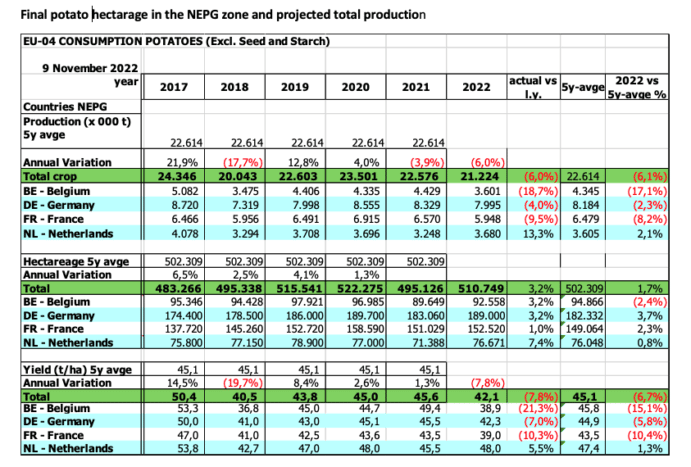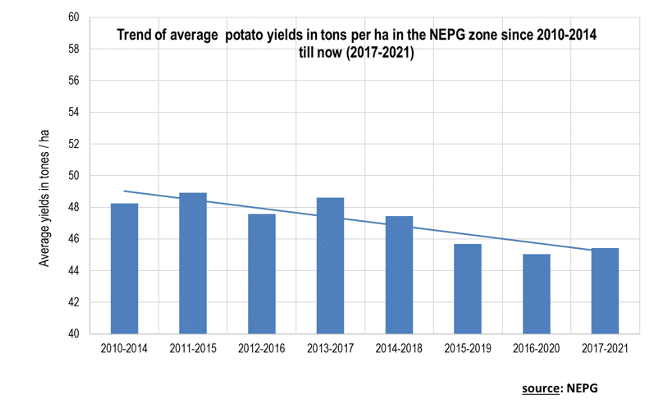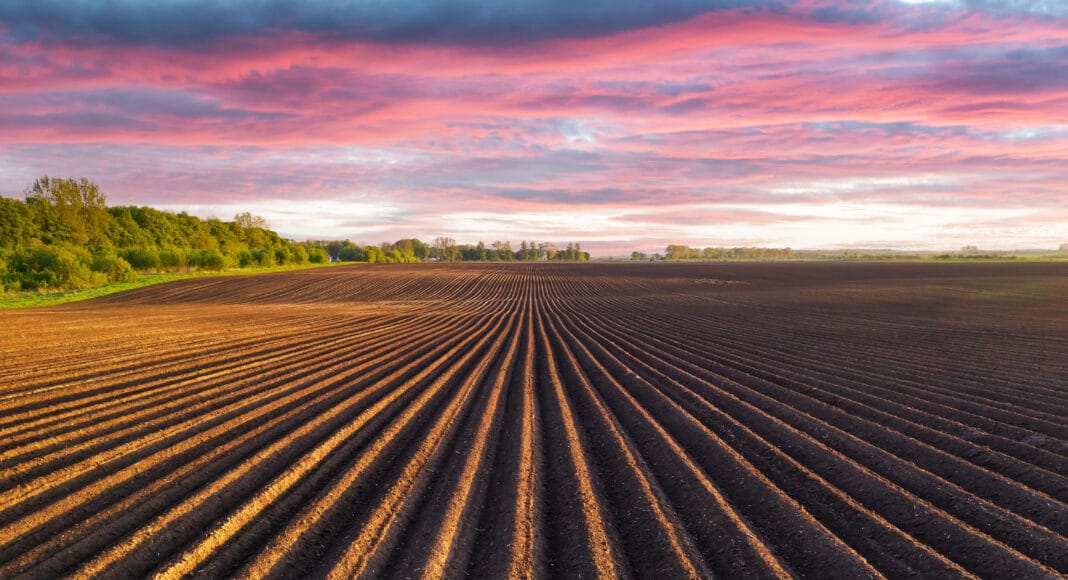The North-Western European Potato Growers (NEPG) estimates global potato production 2022 in the NEPG zone will be down six per cent compared to last year, a news release said.
Rains in September helped a good deal of the potato fields to make additional tons late September, beginning of October. Global production is higher than expected, but there are big regional differences, with zones in the north of the Netherlands with very good yields (due to more rainfall, and also widespread irrigation). In the west and north of Germany yields are mainly on average. Zones in some parts of Belgium and even more in France had very disappointing yields. In these ares some farmers won’t be able to deliver the totality of their contracts, the release said.

In 2022, yields per hectare were more varied between countries, regions and farms, the release noted. Local weather influences and the irrigation led to big yield spreads — ranging from less than 30 tons per hectare to more than 65 tons per hectare. Overall production could be fine tuned within a few weeks pending on first stock estimates throughout the NEPG zone.
Sky high production costs (current and expected) and good cereal prices have prompted farmers to sow more cereals (barley and wheat). The release noted this will have an effect on potato area.
There hasn’t been a single farmer in the NEPG zone who hasn’t felt the rising production costs during the last months, the release said. Two examples are shown here, but a dozen of different other prices or indexes could be shown.
On average in the NEPG zone, between October 2021 and October this year, electricity prices have gone up by 280 per cent (ranging from 50 to 500 per cent increase). During the same period, diesel prices have gone up by 55 per cent (ranging from 34 to 95 per cent increase).
Downward Trend of Average Potato Yields
When one combines the higher production costs with the trend of lower yields per hectare (due to climate change, soil fatigue, etc.), then production costs per ton are rising, the release said.

Contract prices and conditions should take these evolutions into account, the release notes.
“One of the ways to pay fair value (contract prices) for potatoes is to work with cost price indicators. Upcoming contract prices could be linked to a range of price indexes (energies, fertilizers, machinery and equipment, contractor’s tariffs, buildings and storage devices, etc.),” the release said.
Related Articles
Drought Drops European Potato Crop by Seven to 11 Per cent
Drought, Ukraine Invasion Bring Extreme Losses for European Potatoes











